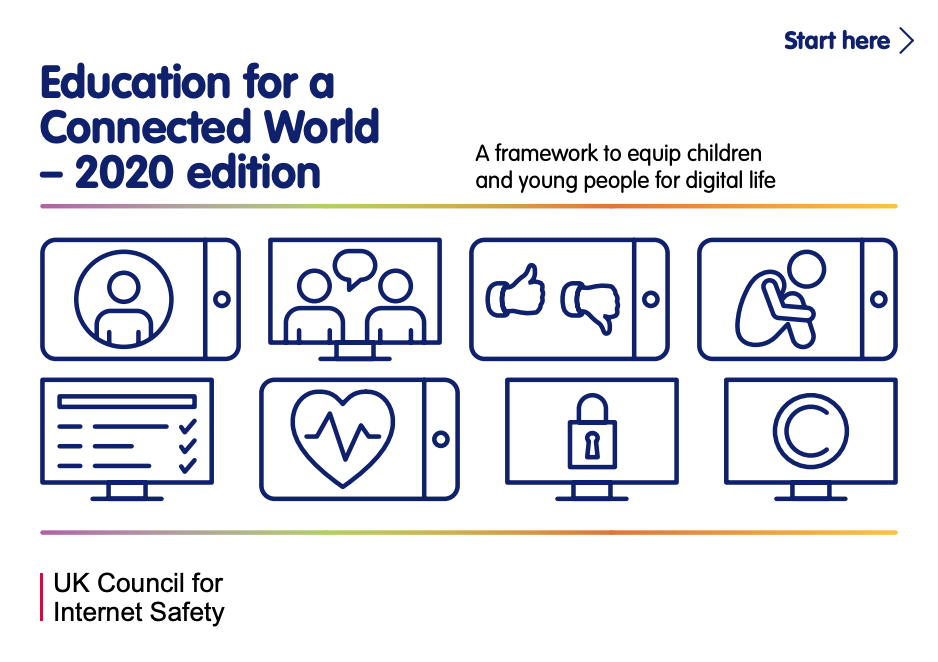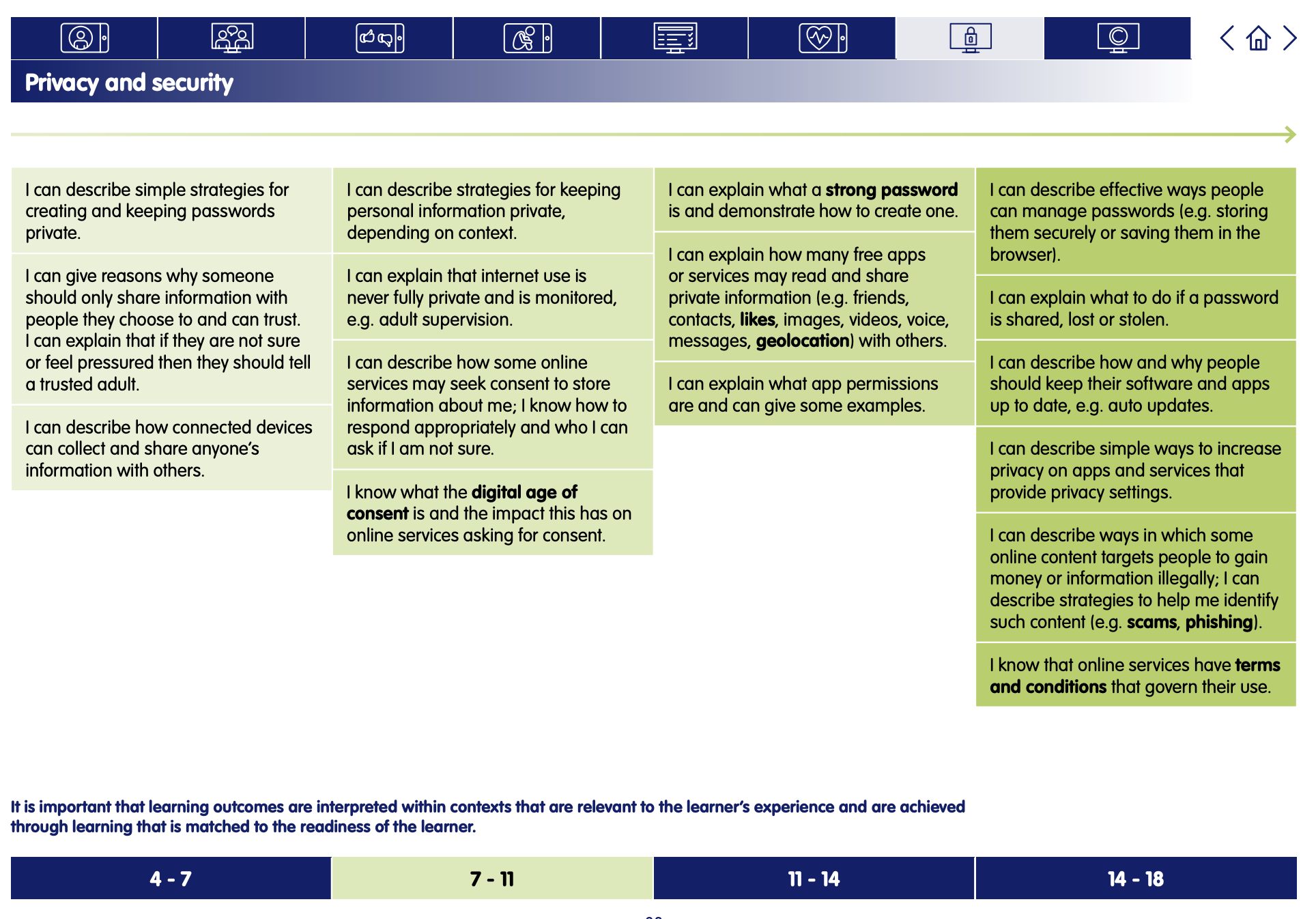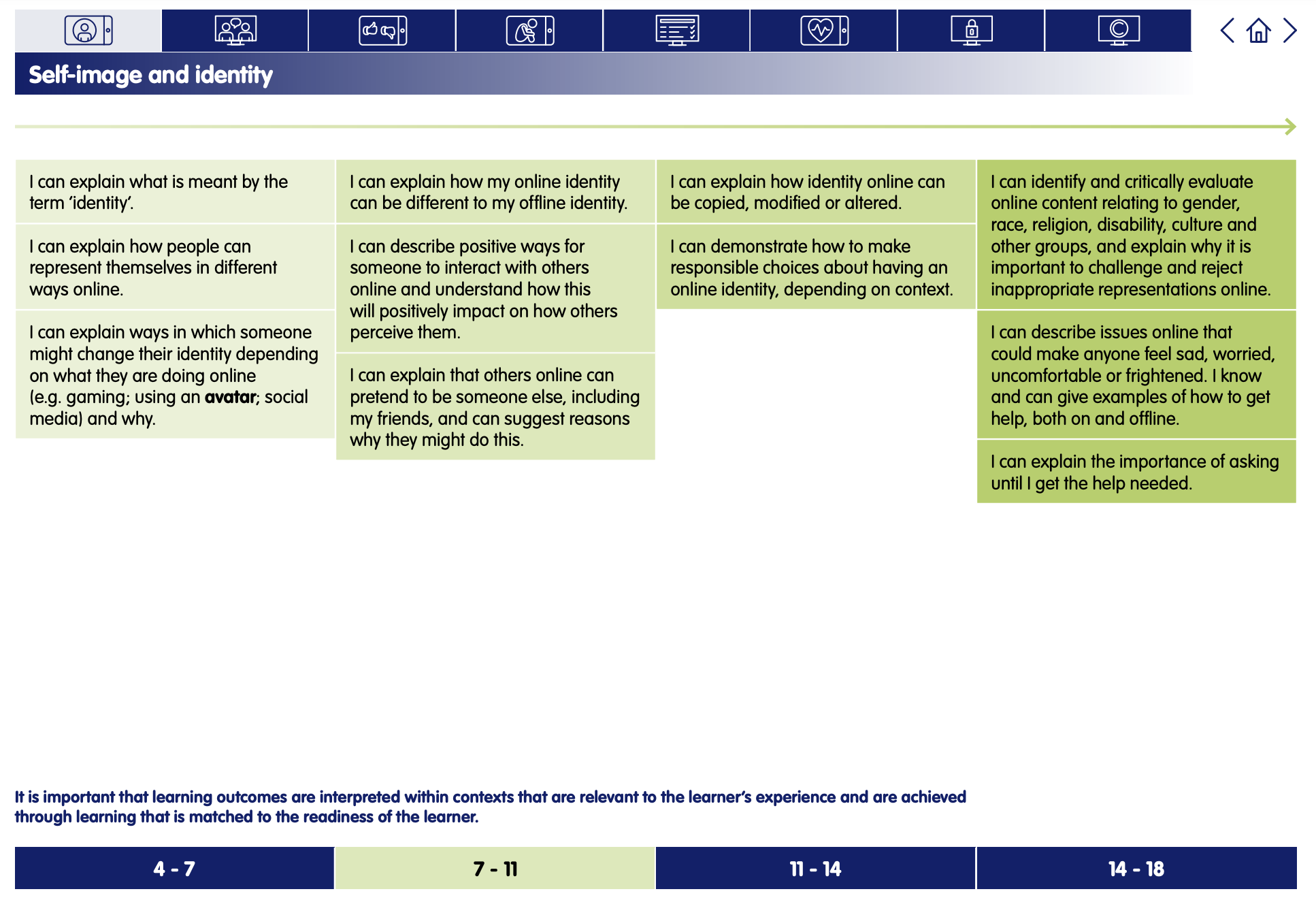Private and Personal Information
Digital Literacy and Online Safety (Y5) - Lesson 2
A note about this lesson

This lesson is taken from Common Sense Education’s excellent Digital Citizenship curriculum. Their resources are shared for free under A Creative Commons Attribution- NonCommercial- NoDerivatives 4.0 International License.
You can find the original resources HERE.
Objectives
- Identify the reasons why people share information about themselves online.
- Explain the difference between private and personal information.
- Explain why it is risky to share private information online.
Lesson 1 - My Media Choices
Lesson 2 - Private and Personal Information
Lesson 3 - Our Online Tracks
Lesson 4 - Keeping Games Fun and Friendly
Lesson 5 - Be a Super Digital Citizen
Lesson 6 - A Creator's Rights and Responsibilities
Links to Education for a Connected World.
This lesson from Common Sense Media's Digital Citizenship curriculum links to the following strands from the Privacy and Security and Self-image and identity sections of the Education for a Connected World framework.
It's in our students' nature to share and connect with others. But sharing online comes with some risks. How can we help kids build strong, positive, and safe relationships online? Help your students learn the difference between what's personal and what's best left private.
Before the lesson: As an optional activity before the lesson, have students play the Share Jumper game in Digital Passport™ by Common Sense Education. This will help introduce key concepts of this lesson. To see more, check out the Digital Passport Educator Guide.
Say: Today we're going to start with a little game. For each statement that I read, if it is true about you, stand up. If it isn't true, stay seated. After each statement, look around to see who else is standing or sitting. (Slide 4)
Read the statements below to your class, allowing time for students to stand or sit after each one. Prompt all students to sit back down before moving on to the next statement.
- Stand up if you or your family speak another language besides English.
- Stand up if you have two or more siblings.
- Stand up if you have a pet.
- Stand up if you have ever been on YouTube.
- Stand up if you have ever shared something about yourself online.
Have students all sit back down and ask: What did you learn from doing that activity? Did you enjoy it? Why or why not?
Invite volunteers to share. If necessary, follow up with students who share by asking to explain what they found fun or not fun about it.
Say: The purpose of that activity was to have some fun getting to know each other better. There are many situations where sharing information about yourself can be fun and positive. One of those situations is on the internet, where sharing your likes, opinions, and other personal information -- but not private information -- can be positive and fun.
Analyse - Why Do People Share
Say: In today's lesson, we're going to talk about being online -- and ways that you can share things about yourself that are fun and that connect you with others. We're also going to talk about ways that you can protect yourself so that you don't share more than you should.
Project "Did You Know?" on Slide 5.
Ask: What do you observe in this slide? What's the main idea it's trying to show? Share your ideas with your partner.
Invite students to share their responses. If necessary, clarify the meaning of hardwired as something you're born with, that sharing is something humans do naturally, and that there are many benefits to it.
Say: What is something about you that you might share with others that would give you one of these benefits? Take turns sharing your idea with your partner.
Invite students to share their answers. Follow up by asking them to explain which benefit the example would give them (feel good, learn, connect, or persuade). If the student isn't sure, open it up to the rest of the class. Examples may connect to more than one benefit.
Analyse - Private or Personal
Say: So there are lots of reasons to share information about yourself. However, not everything about you is OK to share. We're going to watch a short video about sharing online. As we watch, think about what information is OK to share and what isn't.
Project Slide 6 and show the video Private and Personal Information. After the video, invite students to respond to the discussion question and prompt them to give examples of private and personal information. Clarify that private information is the most risky to share because it can be used to identify you individually. (Slide 7)
Say: Now, we're going to play another little game. For each example that I say, discuss with your partner whether it is private or personal. To decide, ask yourself, "Is this information that would also be true for many other people?" If so, it is personal. If not, it is private. (Slide 8)
Read aloud the first example, "Age." Remind students to consider whether this is information that would be true of many others. If it is, then it is personal. If not, it is private. Give students one minute to discuss and decide.
Say: If you think this is private information, stand up. If you think it is personal, stay seated.
After students stand or stay seated, invite students to explain why they chose the answer they did. Follow up by prompting them to refer back to the definitions of private and personal. If necessary, help students clarify that there are many people (in their school, in their city, even in the class) who are the same age as them.
Say: Everyone who is still seated, you are correct! This information is personal, not private.
Repeat Steps 3–4 for each of the examples:
- home address (private)
- email address (private)
- date of birth (private)
- favorite music (personal)
- how many brothers and sisters you have (personal)
- phone numbers (private)
- credit card information (private)
- favourite food (personal)
- name of your pet (personal)
- name of your school (private) (Explain that although school name is something that is true for many people, it is risky to share it with someone you don't know, and you should get permission from a trusted adult first.)
Extension Activity:
Consider having students keep track of how many private or personal statements they get right. Offer the class a reward for reaching a total number of cumulative points. Alternatively, students could compete against each other for an individual reward.
Plenary - Exit Ticket
Distribute the Exit Ticket Student Handout to students.
Say: To finish, you're going to complete two short reflection questions about what we learned today. You'll have five minutes to write. (Slide 9)
Give students five minutes to write their reflection. Invite volunteers to share with the class.
Collect everyone's handout before they leave to assess their understanding of private versus personal information.
Have students complete the Lesson Quiz. Send home the Family Activity and Family Tips.



